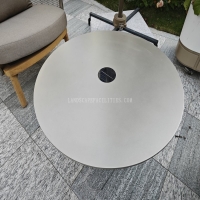Welcome to the website for landscape facilities products and knowledge.
How does the table’s weight impact portability and repositioning within a space?
The weight of a table significantly influences its portability and how easily it can be repositioned within a room or between spaces. Lightweight tables, typically constructed from materials like aluminum, engineered wood, or plastic, offer superior maneuverability. This makes them ideal for dynamic environments such as home offices, studios, or multi-purpose rooms where frequent layout changes are desired. Their ease of movement encourages spontaneous reconfiguration, enhancing space utilization and adaptability.
Conversely, heavy tables, often made from solid wood, thick glass, or stone, provide stability and a substantial feel but present considerable challenges for relocation. Moving these pieces typically requires multiple people, specialized equipment like furniture dollies, or even professional movers, limiting their flexibility. The table's design also plays a crucial role; features like built-in casters, a foldable mechanism, or a central pedestal base (as opposed to four corner legs) can dramatically improve mobility, even for somewhat heavier models.
Ultimately, the choice involves a trade-off between perceived durability and practical flexibility. For spaces demanding frequent adjustments, prioritizing a lighter weight and mobility-enhancing design is paramount. For permanent installations where stability is the primary concern, a heavier table may be a suitable, albeit static, choice.
Related search:

Recommendation
Outdoor stainless steel table with solar-powered ambient lighting feature - excellent design.